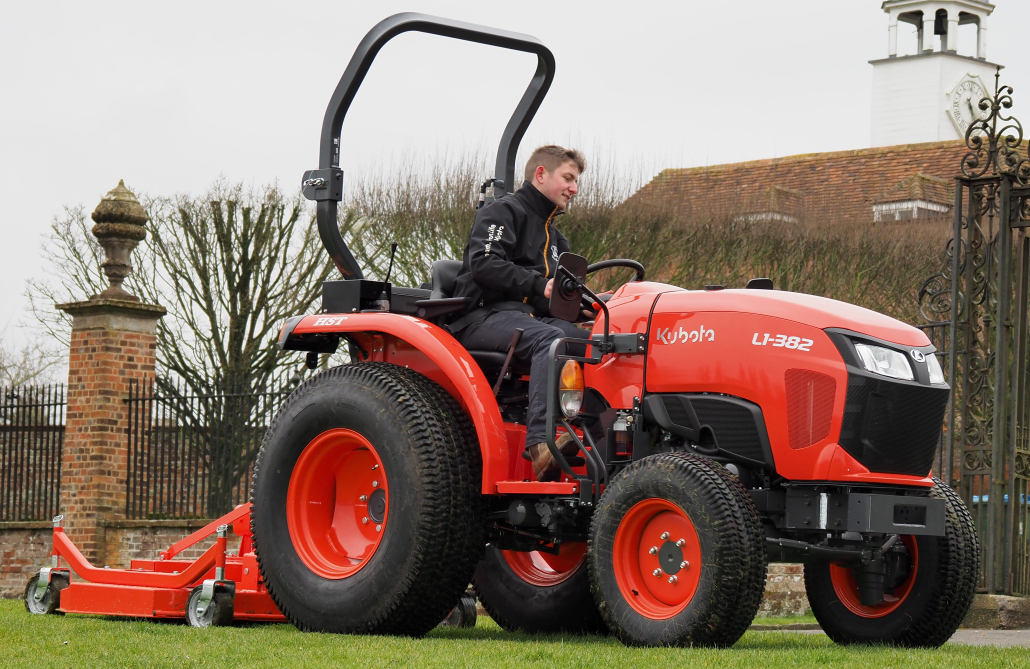Nip bugs in the bud: A host of bugs usually appear in April to prey on trees and shrubs but the recent cold snap early in the month may have proved a stay of execution for some species.
“The dip in temperatures most likely pushed things back a little,” says Dr Jon Banks, Research Lab Manager at Bartlett Tree Experts, “but plenty of undesirable things will be coming out very soon.”

Nip bugs in the bud
Our treasured conker trees grow fearful this time of year of what may be about to hit them – the horse chestnut leaf miner.
These tiny moths emerge from leaf litter just as horse chestnuts burst into leaf, feeding off the fresh green foliage to leave unsightly trails and brown, crinkly remains.
The trees can even drop their foliage mid-season, giving up the ghost for the year in the hope of a better climate next time round.
Leaf miner, and another blight affecting the same species – horse chestnut bleeding canker – spread alarm across the UK when they first struck some 15 years ago but things are improving, Dr Banks notes.
While leaf miner is endemic now, arborists, landscapers and grounds managers are finding ways to combat the condition, he says.
“The moths typically emerge just after the tree’s leaves have expanded. Disposing of leaf litter can help reduce or prevent outbreaks and while no licence is currently available specifically for treating horse chestnut leaf miner, spraying with a broad-spectrum systemic insecticide, such as synthetic pyrethroid (trade names include Decis and Bandu) designed for amenity trees, is proven to be effective,” he explains.
“Tightly focusing the spray using a lance targets the treatment liquids where they are most needed,” he says. “Ideally, apply the liquid until just before run-off occurs as that ensures maximum adhesion to leaves.”
Turning his attention to larger specimens, Dr Banks adds that Bartlett Tree Experts have developed tailored management services, using spray equipment designed to safely deliver plant protection products efficiently and effectively to the canopy.
“Leaf miners have three generations during the summer so follow-up spraying is critical, he states. “Two treatments usually are applied. The first, in April or May, lasts three to four weeks, then it’s time for the second application. However, a third spray will provide better coverage for the full season.”
Lance spraying also delivers ecological benefits, Dr Banks believes. “We’re not just spraying for our own sakes. Losing leaves mid-season deprives wildlife of habitat and the less spray that falls where it is not needed or where it may cause harm, such as any nearby water, the better.”
Spring is a time when clients realise their trees are not in full health, or are dead and yell for advice, he says. “It’s a good time to look at trees as often we can see branch structure very well but also gain an idea of what’s coming into leaf, depending on the species.”
The good news about horse chestnut bleeding canker, which is caused by the pseudomonas bacteria, is that more trees may be tolerating the disease due to system induced resistance, he adds – because wholesale loss of our conker trees would deprive new generations of children of a favourite pastime.
https://www.bartlett.com/resources/horse-chestnut-lead-miner.pdf
www.berthoud.fr/en/
Find Berthoud on Twitter, Facebook and Instagram
Just the job
With 6 Bar pressure ceiling, the Berthoud Cosmos 18 Pro is tailor-made for treating trees using its giant telescopic lances, extendable to 2.4m or 3.6m and made in light, robust, rigid composite materials.
Highly chemically resistant and mechanically tough they come with hose, quick connect adaptor and profiled handle.
Check the website for calibration formulae and nozzle-to-target distances.
For the latest industry news visit turfmatters.co.uk/news
Get all of the big headlines, pictures, opinions and videos on stories that matter to you.
Follow us on Twitter and Instagram for fun, fresh and engaging content.
You can also find us on Facebook for more of your must-see news, features, videos and pictures from Turf Matters.














